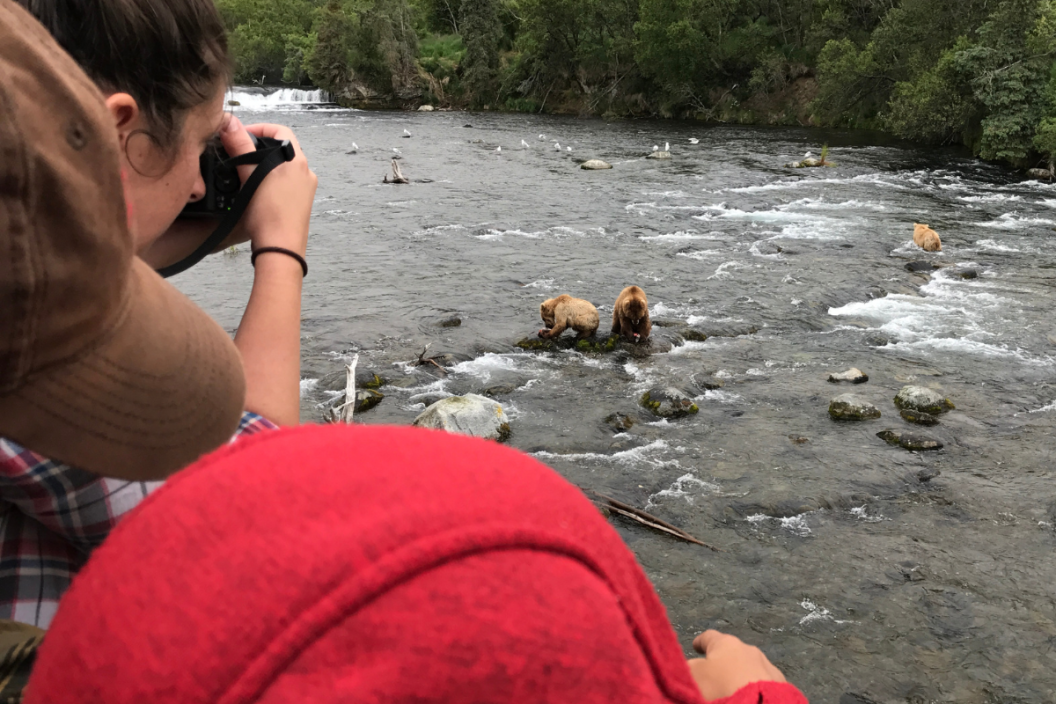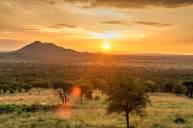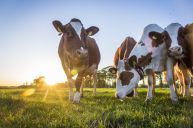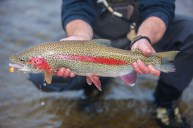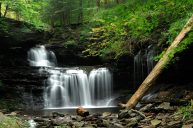When I reached the first viewing platform on the Brooks Falls Trail in Katmai National Park, a sight so rare as to be unbelievable overwhelmed me. Yet, it was still oddly familiar. It was my first glimpse of the falls on the Brooks River, and it stopped me in my tracks. Unbelievable because a dozen brown bears patrolled the river, some only yards from the elevated platform we were standing on.
The "smaller," younger bears roamed the banks, picking over half-eaten salmon. The river seethed as thick pods of red salmon surged upstream. Giant mature bears staked out the prime fishing spots, some catching salmon as they leaped waterfalls. Others charged into the water, coming up with salmon flopping in their jaws. At the same time, the river around them exploded in a spray of panicked fish.
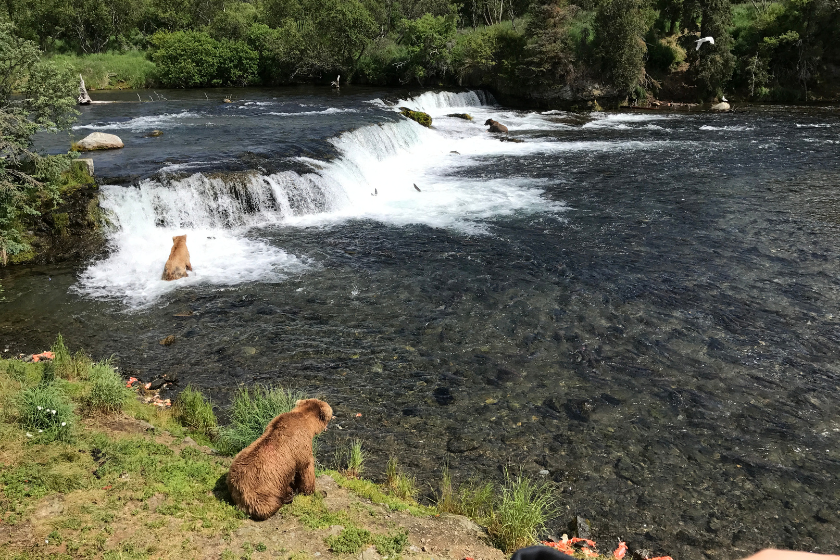
Anthony Licata
Yet this incredible sight felt familiar. I'd seen this place many times before—in nature documentaries, magazines, posters, commercials, even memes. We were at Brooks Camp, the world-famous bear-viewing location in Alaska's Katmai National Park and Preserve. I was there with a buddy and our two 10-year-old sons, taking time out from our week-long fishing trip for what we knew was a bucket-list experience.
Farther upstream, a constant wave of salmon launched themselves several feet in the air trying to clear the falls—there were at least 10 in midair at any given time—and more brown bears than I'd seen in my life were there to catch them. We watched one massive boar take up a position at the base of the falls. One salmon after another slithered across a rock in a few inches of water. He'd slam down a paw, chomp on the fish, eat the head, tear away some guts and skin, then let what was left of the flayed sockeye drift down the current for the birds and young bears to fight over. We stopped counting after he'd caught 20.
This drama was in front of us, often close enough to hear bears crunch fish heads, and we hadn't even made it to the prime viewing platform yet.
Although best known for its brown bears, Katmai National Park and Preserve is a massive wilderness of volcanoes, mountains, glaciers, lakes, and rivers. It's remote and isolated, with no roads coming to the park. Yet it's easy to reach by Alaskan standards, either by floatplane or boat. Most visitors take a one-hour commuter flight out of Anchorage to King Salmon, the park's gateway community and home of the Park Service office. You book an air taxi for a short hop to Brooks Camp, or you can come by boat if you're the type who gets nervous on little planes.
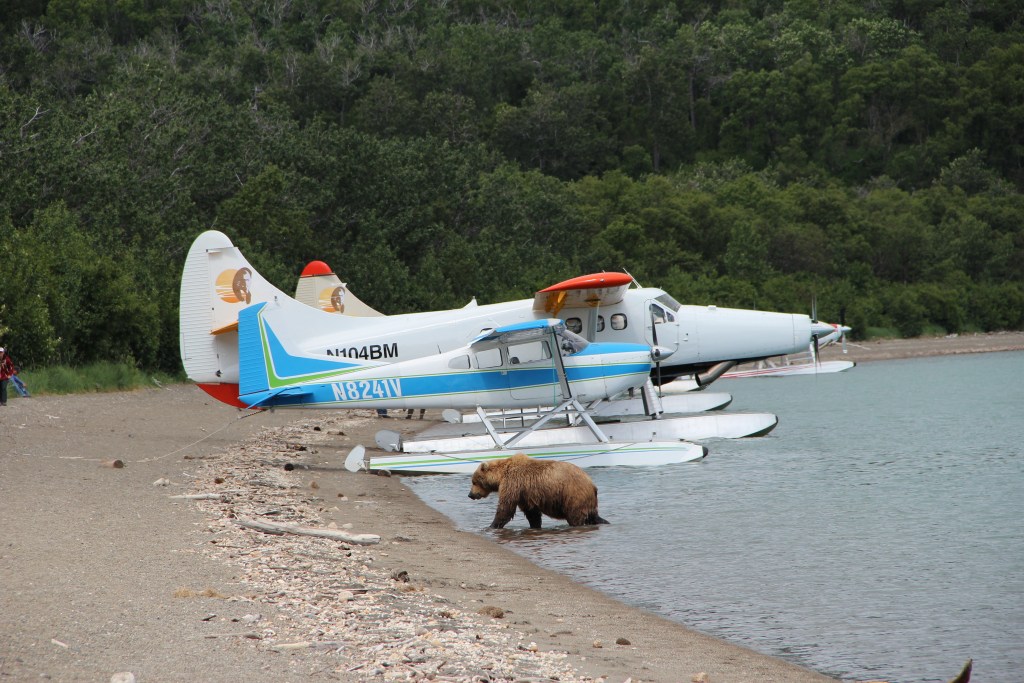
A brown bear checks out the author's plane.
My buddy and I were doing what many folks do, taking a day trip to see Katmai's famous bears as part of a more extended trip in Alaska. We came by floatplane, piloted by Glen Alsworth, our host at The Farm Lodge, in the nearby (for Alaska) Lake Clark National Park, where we spent a week fishing for salmon, rainbow trout, grayling, and pike. Glen is the third generation of a family of pioneering Alaska bush pilots. To us, soaring over volcanoes in Alsworth's Cesna and landing on Naknek Lake was part of the adventure of visiting Brooks Camp.
As soon as we jumped off the plane's pontoon, we saw a massive bear track on the beach's dark volcanic sand. A short walk, and we were in the Brooks Camp Visitors' center for the mandatory 20-minute introduction from one of Katmai National Park's knowledgeable rangers.
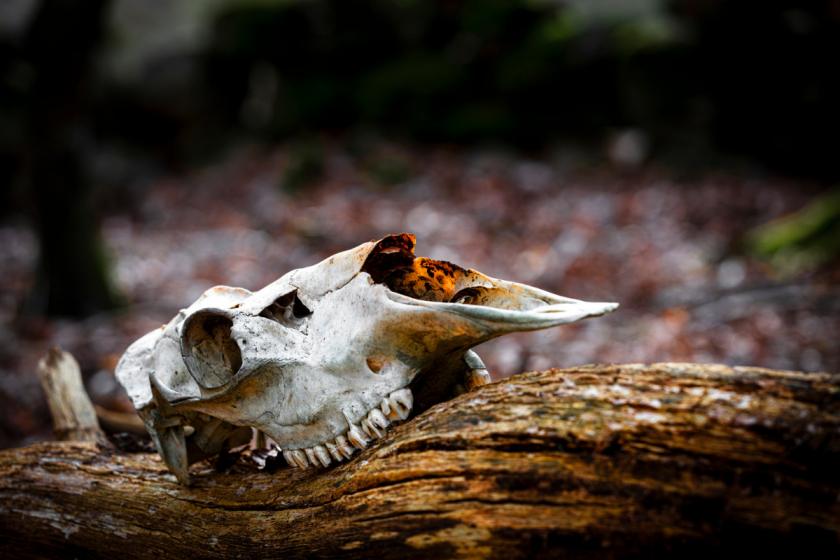
Anthony Licata
The brown bears (brown bears are just grizzly bears that live close to the coast and grow huge eating salmon) show a very un-bear-like tolerance for other bears and humans in this place. They are so focused on packing on pounds by devouring the fatty salmon that run up the Brooks to spawn and get slowed down by the river's cataracts. But just because the bears are more interested in salmon than people doesn't mean they're not wild and that you don't have to be careful to stay well out of their way—something we'd discover for ourselves soon enough.
After the Ranger introduction, you're stripped of any food you're carrying (they lock it up until you return), and then it's a short hike up the trail to the falls and the three viewing platforms. Rangers time groups through each platform so everyone gets a good experience, but those spots aren't the only place to see bears. They're everywhere.
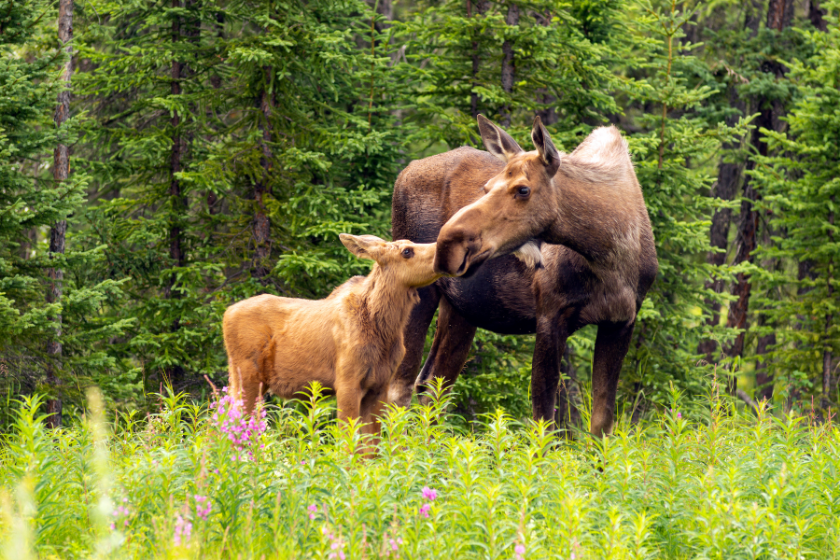
Anthony Licata
We could see a line of anglers waist-deep, casting for salmon, while in a riffle 100 yards upstream, a sow and adolescent charged around, chasing the fish that made it past the fishermen. When the trail passed through some brush and trees, we saw a bear coming our way.
The boys were in the lead and they instinctually did what the rangers had told us: move off the trail, give him plenty of space, and stay out of his way. On our hike back from the falls, a ranger barred us from crossing one of the footbridges over the Brooks because there was a sow within 100 yards of the other side. We stood for over an hour in a nearby elevated platform, watching her roll around in the long grass while her two cubs climbed trees near the bridge. Not a bad place to be stuck.
What Else to Do in Katmai National Park

Anthony Licata
The bears are the main attraction at Katmai, but it's also well-known for its volcanoes and the strange, scarred landscape of the Valley of Ten Thousand Smokes. In 1912, the Novarupta volcano blew, erupting for 60 hours. It sent out tremors that triggered avalanches as far away as Denali. Clouds of ash darkened the sky for 100 miles, and the blast devastated the surrounding area. The lush valley was obliterated and left were thousands of fumaroles that belched gas and steam.
The valley was made a national monument in 1918 and has long-since stopped smoking, but it is one of the most unique places you'll ever hike. It's miles of a barren, surreal landscape made of pumice, ash, and rock eroded and sculpted by wind and water. You can reach the trail via a bus from the Griggs Visitor Center. People can explore on their own, but the Park Service also runs very informative ranger-guided hikes.
As any bear would tell you, the fishing is fantastic in the park. In addition to the sockeye, coho, king, and pink salmon runs, the park is a great place to fish for rainbow trout, char, and grayling. If you're into kayaking, go spot bears on the shores of the beautiful lakes as you paddle by, or cruise along the rocky shoreline of the park, watching seals and humpback whales. There are miles of hiking trails, and while everyone else is staring at bears, you can see moose, caribou, wolves, beavers, and foxes. The park is open year-round, but June through September is the best time to visit, especially if bear viewing is your goal.
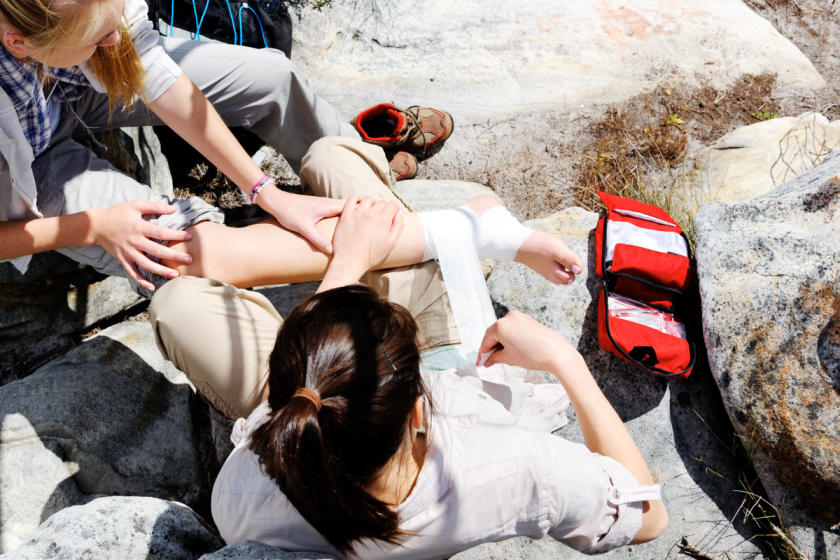
Anthony Licata
If you want to stay in the park, you'll need to reserve well ahead of time. Brooks Lodge and the campground at Brooks Camp are great places if you're looking for a multi-day bear viewing adventure. If you're up for backcountry camping, get a permit and your options are limitless.
We visited Brooks Camp as a day trip from the Farm Lodge. Located in Port Alsworth in Lake Clark National Park and Preserve, it's a family-run outfit that caters to families to mix fishing with wildlife viewing and sightseeing. The cabins and lodge are new and very comfortable. The food is excellent, and the staff is welcoming and friendly. Best of all, the pilots are some of the most experienced in Alaska.
Even though you're shockingly close to the bears from the viewing platforms, I would feel blind coming to a place like Katmai without binoculars. Spend some money and get a decent pair, and you'll be surprised how much you use them. Whatever you do, don't forget your raingear-this is Alaska.
If you can't pull off a trip to see the bears of Katmai National Park this year, you can always watch their very popular Bear Cam. (Don't miss Fat Bear Week, usually in September, when the cam bears compete in a ridiculous and totally fun March Madness-style bracket). Before long you'll want to experience the real thing.
Anthony Licata is the editor-in-chief of Wide Open Roads. He's been traveling and writing through the U.S. for many years. He lives with his wife and two children in Bozeman, Montana.
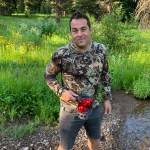
Share your wildlife encounters with us on our Wide Open Road Facebook!
READ MORE: The Outrageous Beauty of Ricketts Glen State Park
